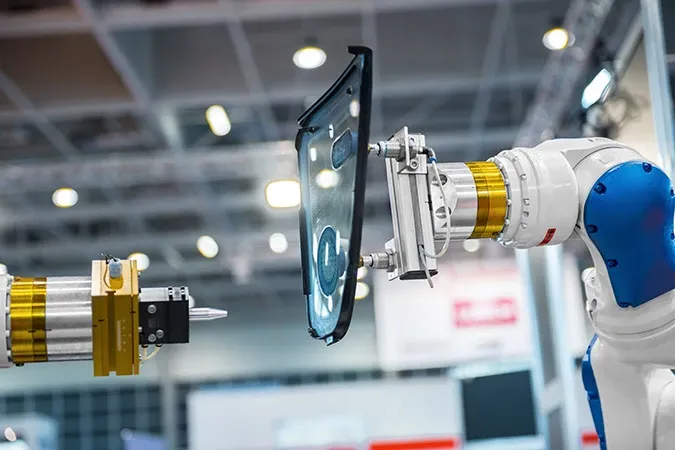Qualcomm Announces Snapdragon 8 Gen 5 Platform
Qualcomm added its latest smartphone platform to its premium-tier Snapdragon range.

Two years ago, a robot crushed a 22-year-old man to death at a Volkswagen factory in Germany. While this type of tragedy is still relatively rare, efforts to improve safety are intensifying as factories around the world become increasingly automated, according to Bloomberg.
Now, in a development that’s drawn interest from car makers including Volkswagen, entrepreneurs Roman Weitschat and Hannes Hoeppner, working at the German Aerospace Center outside of Munich, say they have designed a way to better safeguard interactions between humans and robots with the aim of allowing them to work more closely.
Their newly-created company, Cobotect, is using the decades-old concept of airbags to cushion potentially dangerous automated parts and prevent workers from getting hurt. Increased safety would mean robots could work more efficiently and at a faster pace when near humans, according to the researchers.
“A lot of people were complaining about unsafe robots and robot tools,“ Weitschat said in an interview in his laboratory. Sharp edges on parts handled by robotic arms can pose risks to workers if they are accidentally hit, making it hard to gain approval for the machines to be positioned close to humans, he said.
The Cobotect team started working in March 2016 on a now-finished prototype. Videos and demonstrations show a robotic arm with a hand-sewn airbag attached to its gripper inflating and deflating. The contraption nudges and then knocks the head of a person, who walks away unharmed. The product won an innovation award from Kuka, a maker of industrial robots, at Germany’s largest industrial fair in Hannover.
Robots working near humans are usually either walled off or programmed to move slowly, around 0.1 meters per second, so they can’t hurt a worker in a collision. That speed is considered inefficient for manufacturing, said Weitschat and Hoeppner, adding that with sharp edges protected, robots could move faster - as much as one meter per second.
If the Cobotect airbags get German safety licensing, deploying robots more widely onto factory floors could become a lot easier, Weitschat said. “The robots wouldn’t be stuck in one place, walled off with fences, but could be placed here one day, and somewhere else the next,“ he said. “That’s always the problem, that this flexibility isn’t there. Industry then goes to other countries where they let people do it for cheap.“